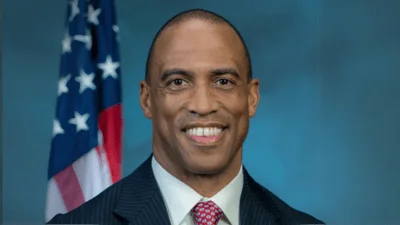Today’s hearing is on work incentives for Americans who qualify for Social Security because of a severe disability, illness, or injury.
Nine million Americans and two million of their spouses and children currently receive Social Security Disability Insurance. All Americans pay into SSDI so that one accident or one diagnosis doesn’t mean a lifetime of poverty.
In order to qualify for SSDI, disabled workers have to prove that their condition is so severe that it prevents them from working at a self-supporting level and will last for more than a year. They must also provide evidence to the Social Security Administration that they’ve worked long enough to qualify for their benefits. On average, SSDI recipients worked and paid into the program for 22 years before receiving benefits.
Despite the severity of their impairments, some of these Americans with disabilities continue to make efforts to work. And we should continue to support their efforts, while not harming those who cannot.
Congress has created special benefit rules in Social Security called “work incentives." These rules are designed to encourage work by giving individuals time to test whether they can work at a self-supporting level before their benefits end. Before Congress enacted these work incentive rules, many disabled Americans were afraid to even try to return to work, fearing they could lose their Social Security just for trying.
In addition to these “work incentives," Congress has also created a wide range of other programs designed to assist disabled Americans to work. The Ticket-to-Work program, enacted on a bipartisan basis in 1999, provides services to help Social Security beneficiaries understand the impact of work on their benefits, and get the employment support they need to be successful. The federal-state vocational rehabilitation program, which is not in our Committee jurisdiction, helps people retrain for new work, if they can’t do their old job.
Even with the supportive services, vocational retraining, and special benefit rules, only about 15 percent of beneficiaries have any earnings within five years of qualifying for Social Security. Many attempt work, but are not able to sustain a job because of their impairment. Of those who do, most are only able to work part-time or for very low pay, earning less than $750 a month. Under current law, those individuals are able to keep all of their earnings to help support themselves. A very small fraction - about 4 percent, mostly younger workers - are able to earn enough to work their way off Social Security.
As our Committee reviews the Social Security Disability Insurance program and considers improvements, it is important that we know the full facts and not rely on anecdotes. We should do so with an understanding that all of us support combating fraud. Indeed, Mr. Becerra and Mr. Johnson have similar proposals, although a key difference is whether we provide the resources needed to make the proposals work. And we should do so understanding the power of work - people want to work both because of the earnings and the dignity that comes with having a job.
Social Security Disability Insurance plays a vital role in the lives of millions - I hope we can work together to make sure it continues to be there for all Americans.







